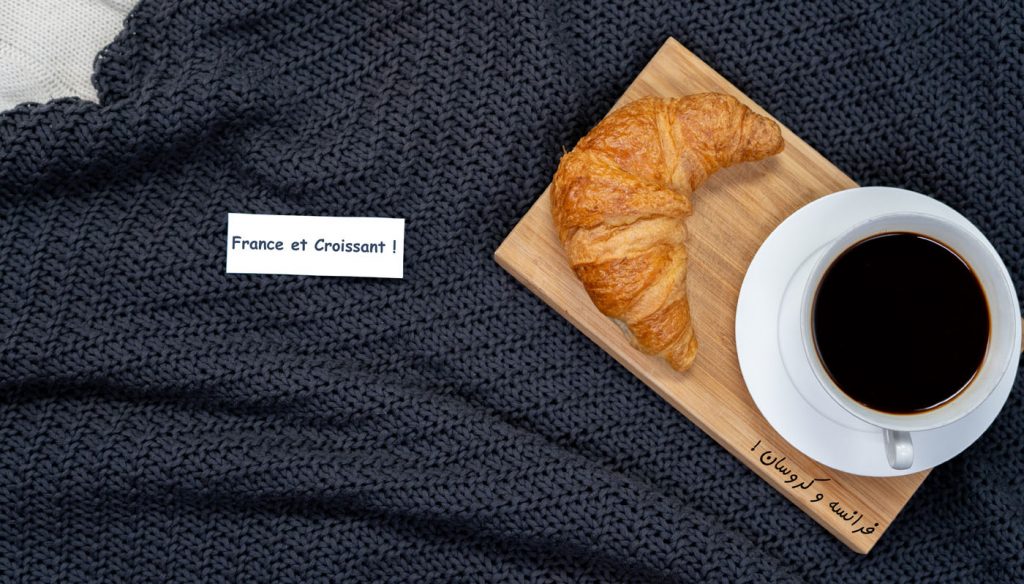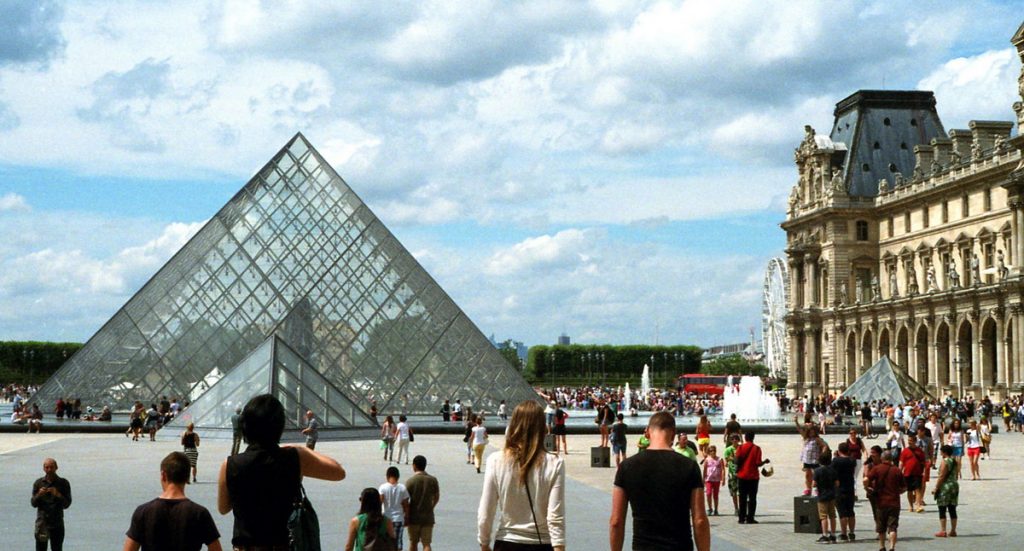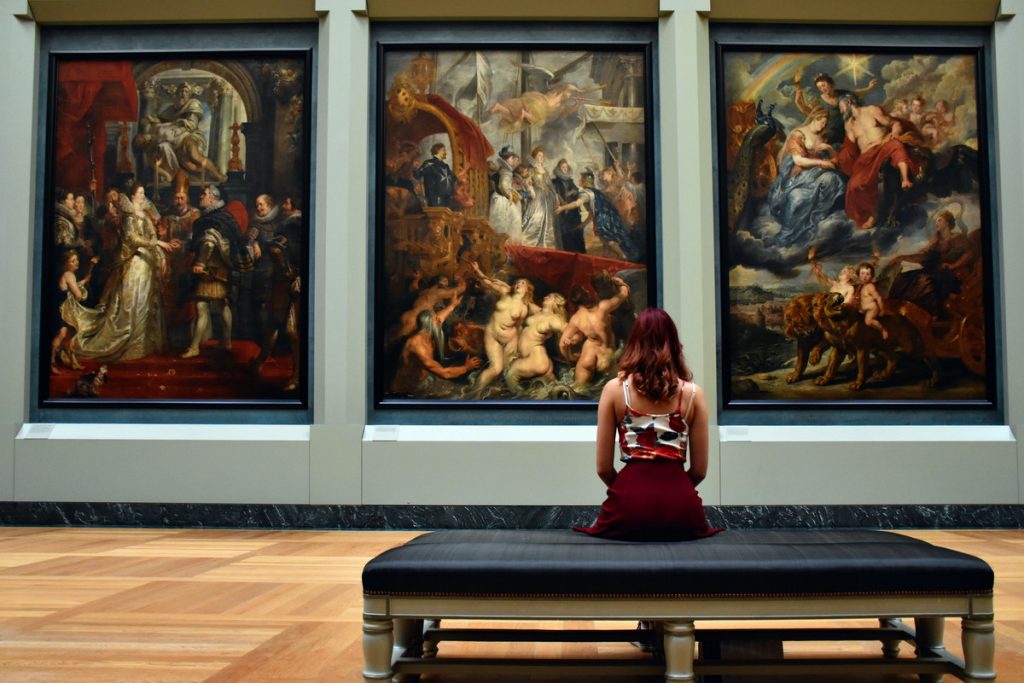Before talking about culture, I would like to introduce the Croissant! Which is for me, one of the symbol of French culture.

A croissant is a buttery, flaky, viennoiserie pastry named for its historical crescent shape. Croissants and other viennoiserie are made of layered yeast-leavened dough. The dough is layered with butter, rolled and folded several times in succession, then rolled into a thin sheet, in a technique called laminating. The process results in a layered, flaky texture, similar to a puff pastry. Yummy!
France has an exceptionally rich and varied cultural heritage with being a leader in tourism destinations in the world. You will have a front-row seat for it while you are studying here.
AN EXCEPTIONAL HERITAGE
There are 43 UNESCO World Heritage sites in France. The variety of the countryside, the historic towns, and charming villages have all been a source of inspiration for artists, painters, and photographers. Visiting France is an invitation to explore the culture and the arts. The European heritage days each year in September are the opportunity to visit the most beautiful gems of French culture.

CULTURE THAT’S WORTH THE TRIP
6,000 municipal libraries, 40,000 protected monuments, and sites, 8,000 museums, 5,000 film theatres, 500 theatre, music, and dance festivals, not to mention the theatre seasons, and countless exhibitions.
The culture found in France is extraordinary. Culture is available year-round throughout the country and can be enjoyed to excess. The regions of France are home to archaeological, cultural, and historic treasures that provide excellent reasons to criss-cross the country.
From the Lascaux caves to the Château of Versailles, Claude Monet’s garden in Giverny and the Museum of European and Mediterranean Civilisations in Marseille – set off to explore a country where art and history are intimately entwined.6 000 bibliothèques municipales.

CULTURAL, FESTIVE AND LIVELY SUMMERS
Every June 21st, the Fête de la Musique (Festival of Music) launched the summer season of outdoor festivals, concerts, and cultural events. Rencontres d’Arles, Paris dance festival, Eurockéennes de Belfort and the Festival d’Avignon there’s something for every art and everyone. Lots of students take advantage of the school holidays to join in the festivities.

Clichés about the French are often more or less accurate, but you still might sometimes be surprised.
BONJOUR, BONSOIR, SALUT OR COUCOU?
Depending on the time of day or the person they’re talking to, the French don’t always use the same word in a greeting. If you’re not sure, a simple “bonjour” is ok.
THE “BISE”
Ever notice how the French kiss each other on the cheeks as a greeting? You don’t do the bise with everyone, nor in every situation. Depending on where you live, you do two, three, or four bises, starting with either the right or left cheek.
THE TRADITION OF THE “APÉRO”
The apéritif, familiarly called the apéro, is a real institution in France. It’s a relaxed time spent with the family or friends before dinner. It’s the time to have a drink while nibbling on something tasty. It is far from the most unpleasant of French traditions. You’ll see; you’ll soon develop a taste for it.

THE BAGUETTE
If you have in mind a picture of a French person walking about with a baguette tucked under the arm, you won’t be disappointed. The French do indeed adore bread and have developed a real cult of the baguette. There are lots of artisanal baguettes and i recommend you to try them, you will fall in love with the french baguettes!

CHEESE
The French love cheese (including me!). Hard and soft cheese, cow’s milk cheese, goat’s milk, or sheep’s milk cheese – there is a huge range of choices. You should easily be able to find one or two to your taste before you become completely addicted.

French Cinema: A Gateway to French Culture
French cinema is a significant and influential art form that reflects the culture and history of France. It has produced world-renowned films, such as La Haine, Amélie, Life is Beautiful, and La Grande Vadrouille. French cinema boasts a long and rich history. It emerged in the early 20th century, with pioneers like Alice Guy-Blaché, Émile Reynaud, Louis Lumière, and Georges Méliès. These pioneers contributed to the development of cinematic techniques, such as editing, special effects, and storytelling. Over the years, French cinema has witnessed various currents and movements. Classic French cinema, which flourished in the 1930s and 1940s, was characterized by romantic stories, light comedies, and historical dramas. The French New Wave, which emerged in the 1950s, was a groundbreaking movement that revolutionized French cinema. French New Wave directors, such as François Truffaut, Jean-Luc Godard, and Claude Chabrol, favored modern stories, realistic dialogue, and bold imagery. Today, French cinema represents a blend of styles and genres. It produces popular films, arthouse films, documentaries, and animated films. French cinema serves as an excellent means to discover French culture. It offers insights into the daily lives, values, and concerns of the French people. By watching French films, you can learn the language, culture, and history of France. More info…